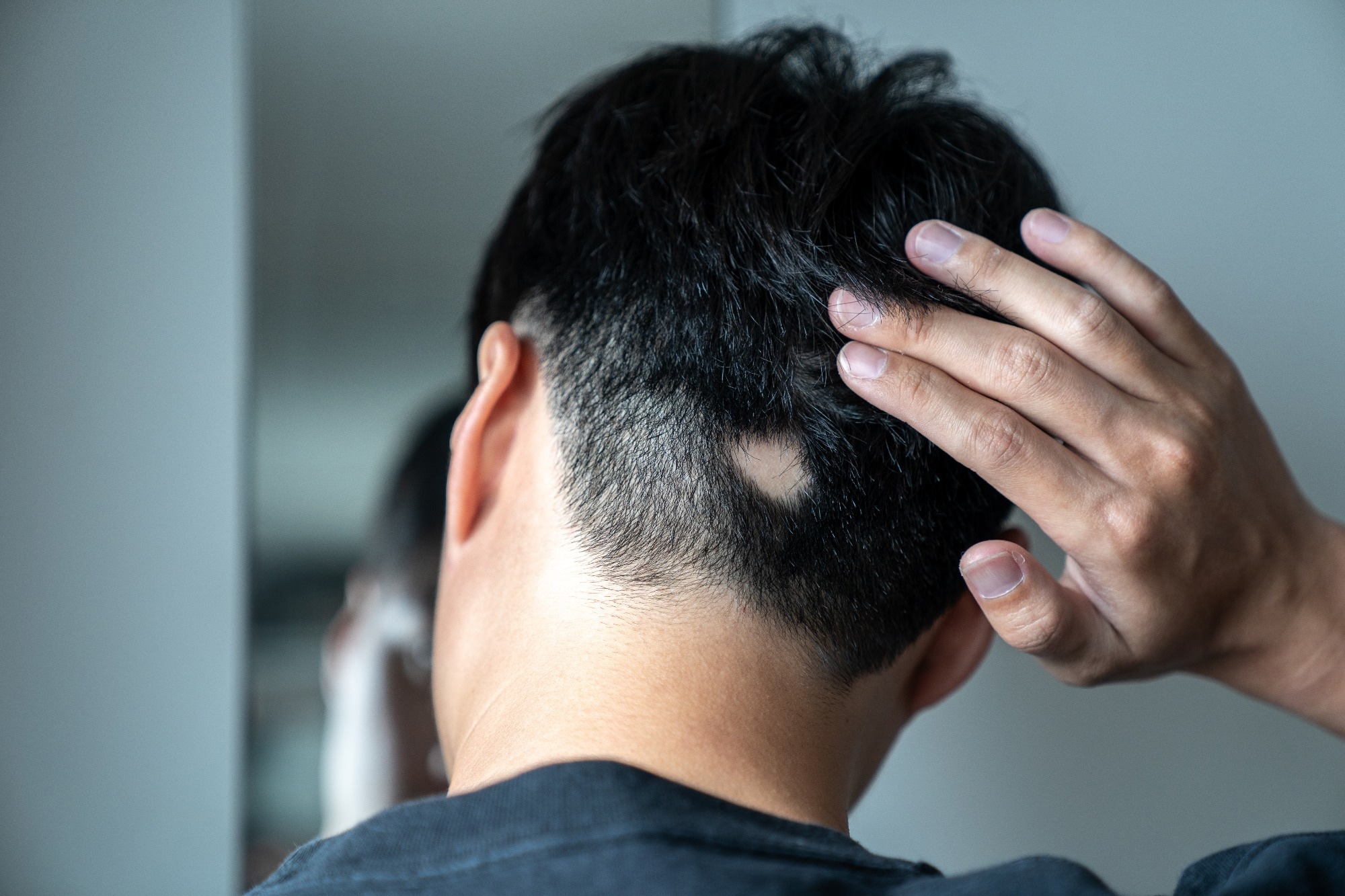Could a mood-boosting neurotransmitter unlock the next breakthrough in hair regrowth? New research reveals how serotonin activates key hair follicle cells, paving the way for novel hair loss therapies.
 Study: Serotonin activates dermal papilla cells and promotes hair growth. Image Credit: Suthikait Teerawattanaphan / Shutterstock
Study: Serotonin activates dermal papilla cells and promotes hair growth. Image Credit: Suthikait Teerawattanaphan / Shutterstock
In a recent study published in the journal Scientific Reports, researchers investigated how serotonin, commonly recognized for its mood- and digestion-related benefits, may also impact hair growth. Using gene expression analysis and hair follicle cultures, the study revealed that serotonin signaling activates dermal papilla (DP) cells and upregulates key genes associated with hair growth, thereby promoting hair shaft elongation. Their findings suggest that serotonin and related compounds may lead to new treatments for hair loss disorders, such as alopecia.
Background
Hair follicles are known to constantly cycle through phases of accelerated growth (called ‘anagen’), regression (‘catagen’), and rest (‘telogen’). This cycle and the balance between successive steps are thought to be maintained by a delicate balance between hormones, nutrition, and environmental exposures. In today’s increasingly polluted world, plagued with suboptimal dietary choices, hair conditions, including alopecia, are steadily increasing in prevalence, substantially impacting patients’ quality of life (QoL).
Dermal papilla (DP) cells are the best-studied cell types involved in hair follicle function and eventual hair growth. These cells have previously been implicated in hair growth factor production and hair follicle cycle modulation, highlighting the potential of leveraging these cells for beneficial hair growth outcomes.
Gut microbial research is increasingly substantiating the close association between gut health and hair growth. Biotin (vitamin B7) and Equol are two well-known gut microbiota-derived bioactives that have been shown to have benefits for hair condition. Unfortunately, the mechanisms by which these benefits arise remain poorly understood.
Recent research has increasingly investigated the role of 5-hydroxytryptamine (5-HT) in skin and hair biology. Commonly called ‘serotonin’, this neurotransmitter is best known for its mood and gastrointestinal activities, but its hair growth potential remains unknown. Identifying potential uses for serotonin in hair treatment would reduce our dependence on synthetic drugs like minoxidil or pave the way to combination therapies with substantially improved efficacy.
About the study
The present study leverages several experimental models (2D monolayer cultures, 3D follicle organoids [follicloids], and actual human hair follicles from patients with androgenic alopecia [AGA]) to investigate whether activating serotonin signaling in DP cells or treating them with a 5-HT receptor (HTR) agonist could alter (promote) hair growth. Follicle organoids are lab-grown models that mimic the natural human follicle structure.
The experimental procedure involved treating DP cells with various concentrations (0-200 μM) of serotonin or equivalent HTR agonist for three days. The HTR agonist used in these assays is sumatriptan succinate, an anti-migraine drug that targets HTR1B/1D receptors and has not been previously used in hair follicular investigations. As the study notes, this was the only HTR agonist investigated.
Following treatment, real-time reverse transcription-polymerase chain reaction (RT-PCR) and RNA sequencing (RNA-seq) technologies were employed to identify and monitor genes with known associations with hair growth, thereby revealing unexpected changes in their regulation and activity patterns.
Simultaneously, the study leveraged high-resolution stereomicroscopy and ImageJ analysis to measure hair shaft-like sprouting in 96-well follicloid cultures and 24-well hair follicle organ cultures, and compare growth rates between treatments as a dose-dependent interaction. This assay was continued for 10 days to investigate a potential time-dependent association, with simultaneous KEGG pathway enrichment analysis used to assess receptor pathway activation.
Study findings
Serotonin treatment prompted robust activation of hair growth-related genes in DP cells. Alkaline phosphatase (ALP) and vascular endothelial growth factor A (VEGFA) expression, both indicators of follicular activity, were observed to increase significantly, with statistical significance for VEGFA starting at 50 μM and for ALP at 100 μM. RNA-seq results confirmed these findings and further demonstrated the upregulation of the calcium/cAMP signaling pathways. The paper proposes that these pathways serve as secondary messengers during serotonin signaling and are recognized hallmarks of follicular activity.
ImageJ-monitored results were no less impressive - hair follicle organoids (hair follicloids) treated with 100 μM 5-HT showed significantly elongated sprouting structures compared to 0 μM 5-HT. Interestingly, while growth rates were comparable across treatments for the first three days, average sprout lengths increased steadily from day 4 to day 10, indicating both time- and dose-dependent growth responses. Encouragingly, these results were replicated in human follicle organ cultures, suggesting serotonin’s potential clinical applications for mitigating hair loss. However, the authors emphasize that these findings are accompanied by important caveats. The effective serotonin concentrations used in the study are orders of magnitude higher than those normally found in the skin, and the paper warns that such high doses could lead to 'Serotonin syndrome,' a condition with serious psychiatric and neuromuscular symptoms. Complicating the picture further, the researchers note that some existing drugs that increase serotonin, known as SSRIs, have been reported to cause hair loss in certain individuals.
Unexpectedly, sumatriptan succinate replicated serotonin’s effects almost identically. While the mechanisms of these interactions remain unknown, these findings suggest that sumatriptan succinate may form a viable repositioned drug for patients with known reactions to common minoxidil- or oxytocin-based interventions. Finally, transcriptomic analyses revealed that serotonin’s effect on hair growth was distinct from that of known agents, such as minoxidil or oxytocin, suggesting potential for future combination therapies.
Conclusions
The present study provides compelling evidence that serotonin can stimulate hair growth, potentially via novel mechanisms. While promising, serotonin’s positive benefits were demonstrated across 2D cultures, organoids, and human follicle cultures, strengthening the case for future research into serotonin-based hair loss treatments.
If future research can determine the mechanism of serotonin’s efficacy, and establish a safe method of application that avoids the risks associated with high concentrations, and it is indeed distinct from those of today’s gold standards, this may open the door to future combination therapies, potentially making hair loss a thing of the past.